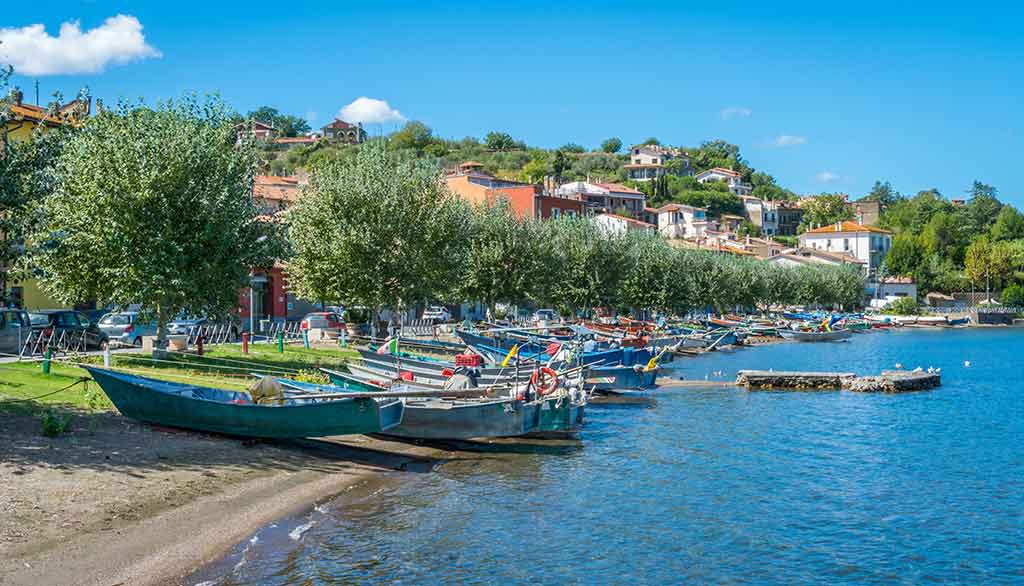Welcome
to Marta Italy. If you’are planning to visit Marta for your next trip and you are
looking for the best places to visit, here you’ll find tips and suggestions of most
popular point of interest and activities not to be missed in Marta and surrounding.
Travelers will appreciate this italian town with
his rich historical and artistic heritage, local culture and environment. Discover the monuments, buildings, natural
treasures and all the details that characterize Marta and its territory. Share and suggest a place you've
visited.

Marta, Lake Bolsena
The fascinating Lake of Bolsena is of volcanic origin, immediately explaining why on its beaches you will find black sand! All the towns around are beautiful and to see but now we focus on Marta, a quiet country that lives mainly on tourism and fishing. The beach and the lakefront made of meadows and flower beds are in the summer a popular destination for many visitors and if you don't arrive early there is no free place to enjoy the sun and the lake.
In the village you can visit the Clock Tower which from the top offers a beautiful view of the lake. The Martana Island is located right in front of the beach, as it is private property it is not open to visitors nor can you dock the boat. Legend has it that during the rule of the Goths, Theodate who was a very greedy man, segregated his wife Queen Amalasunta there and hoping that he could take possession of his title and power, he had him killed.
Marta also has a legend of her own tradition: the Barabbata, a unique name for the party held every year on 14 May. Born as a pagan feast, it was dedicated to the goddess Ceres, the goddess of fertility and later to Our Lady of Mount. The name Barabbata was given by the church in 700 who tried to suppress it since it was definitely more profane than sacred.
To participate in the party you have to get up before dawn, the start is at four in the morning! The drum wakes up the whole country and the procession passes through the streets and alleys with songs and prayers.
At 8.30 the parade of men and wagons only begins, women do not participate but from the balconies they throw flowers on passers-by. The men are divided into four categories: the casenghi on horseback, men at the service of the Lords, the bifolks with oxen and work tools, the villans who carried out all kinds of work on the fields and fishermen.
written by David Perkins - Last update: 14/10/2021
This guide has been translated automatically through a third party service. Visititaly offers these automatic translations to help site visitors, however the automatic translations may contain inaccuracies, errors or inaccuracies. You can contact us to report inaccuracies or errors and we will check the translation.